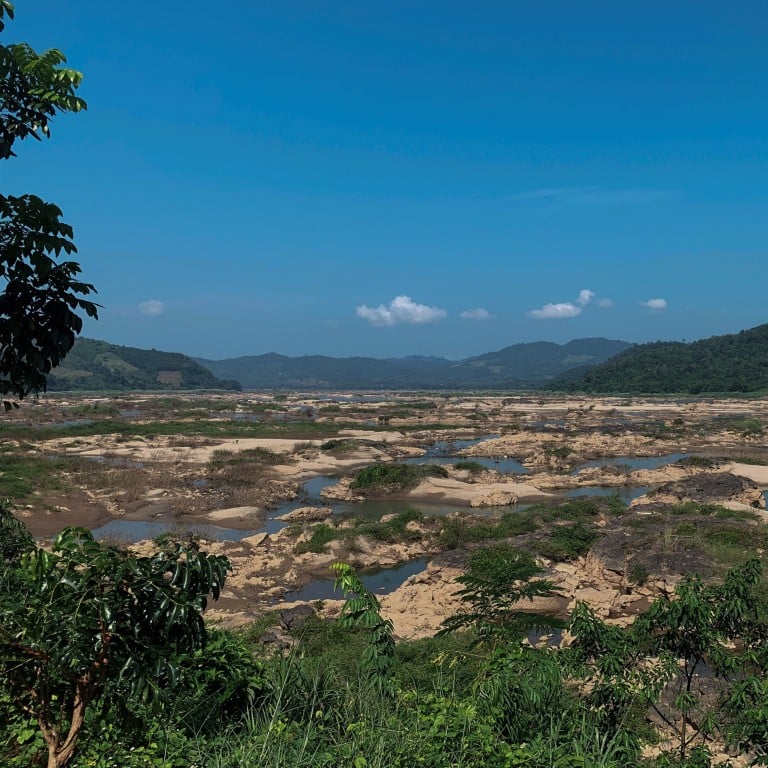
China’s dams did not cause our drought, Mekong nations say – but they ask for transparency
- No proof region’s worst drought in 50 years was result of Chinese dam-building, but China provided inadequate water data, neighbours say
- Southeast Asian countries show backing for China as they balance the matter against economic realities, according to observers
The Mekong River Commission – representing Laos, Cambodia, Vietnam and Thailand – has issued a 13-page statement in response to new US government-funded research claiming China had deliberately held back a large amount of water, affecting the livelihoods of millions of people downstream in the past year.
According to Yu Xiaogang, an environmentalist in the southern Chinese province of Yunnan, simmering tensions between Beijing and the Mekong River countries and 10-member Association of Southeast Asian Nations (Asean) meant that China’s dam construction required careful management.
“Dam building has been a contentious issue along the Mekong due to growing environmental awareness, and it has posed a dilemma for China in balancing its economic interests and relations with local governments and communities,” he said.
Based on satellite date measuring “surface wetness”, this month’s study by Eyes on Earth, a research and consulting company specialising in water resources, found that there were above-average water flows in Yunnan, where the upstream Mekong is known as Lancang River, during the May-to-October wet season last year.
But water levels at a gauge at Chiang Saen in northern Thailand, the closest station to China, were at their lowest in more than 50 years, according to data provided by the commission.
Citing its findings, Brian Eyler, Southeast Asia programme director of the Stimson Centre, a Washington-based think tank, blamed the construction of a cascade of dams in China since the 1990s, which he said had effectively “turned off the tap on the Mekong River”.
The study has added to distrust and unease among people living along the 4,300km Mekong, amid suspicions over Beijing’s expanding strategic and economic footprints.
It prompted Chinese Foreign Ministry spokesman Geng Shuang to dismiss the report as “groundless” on Tuesday last week, and insist that China, too, had suffered a severe drought last year and did not limit water flows.
The Mekong body’s statement supported Beijing’s defence, challenging the methodology of the study and claiming more data on water use and dam operations was needed to determine what caused the worst drought to have hit the region in 50 years.
Chinese power along Mekong River pits commerce against conservation
“Our preliminary analysis, using rainfall data from 2008 to 2019 and observed water flows, showed that the 2019 drought was due largely to very low rainfall during the wet season with a delayed arrival and earlier departure of monsoon rains, and an El Nino event that created an abnormally higher temperature and higher evapotranspiration,” the commission’s report said.
Despite acknowledging that upstream dams had altered seasonal flows of the river, the statement said the American study had failed to take account of complexities of rainfall and run-off, and questioned its approach to linking the storing of water in Chinese upstream reservoirs with the low flows recorded in Laos over the past year.
The commission said that more than 70 dams built along lower Mekong tributaries outside China had contributed significantly to the water flow, and echoed Geng, who said the Lancang accounted for only 13.5 per cent of the Mekong’s water.
But more importantly, it said, there had been inadequate information and data sharing between Mekong River countries and China.
As well as the need to set up a more formal working relationship with Mekong countries, “China should consider providing more data that covers more stations and includes the dry season,” the Mekong countries’ report said.
In a meeting in February with his counterparts from Mekong countries, Chinese Foreign Minister Wang Yi pledged to promote greater transparency, including in the sharing of water data.
Xu Liping, a professor at the Institute of Asia-Pacific Studies, under the Chinese Academy of Social Sciences, said managing water resources was a geopolitical matter, involving conflicting interests.
“Despite cooperation with China over the coronavirus, the Mekong River countries that are under pressure from the devastating economic fallout have to strike a delicate balance between China and the US and its allies that are determined to expand their presence in the region to counter China,” Xu said.
“The Mekong River nations are apparently under a lot of public pressure over the droughts, which are expected to get worse this year, but, as part of Asean, they cannot afford to be outright critical of China and have to continue with their balancing act.”

